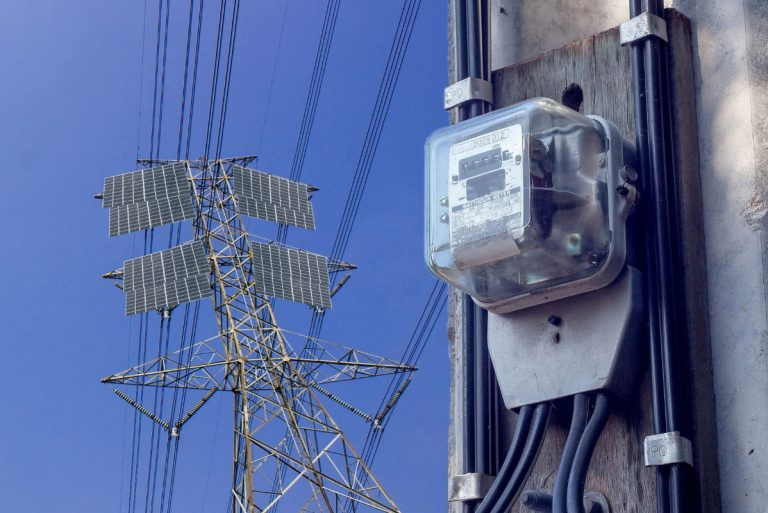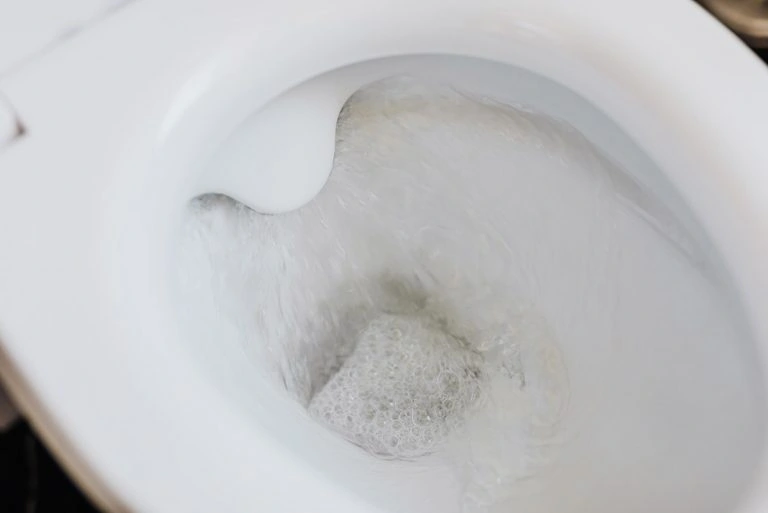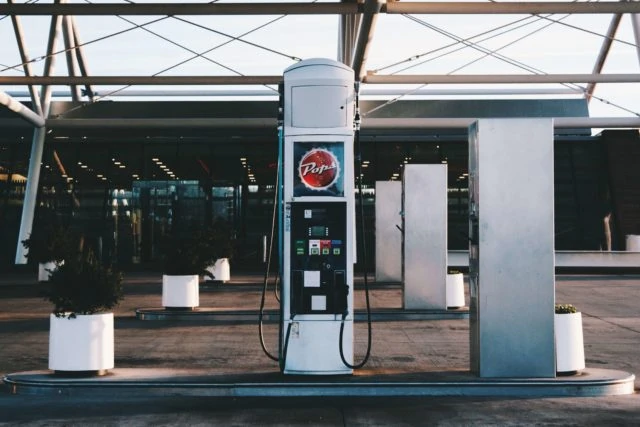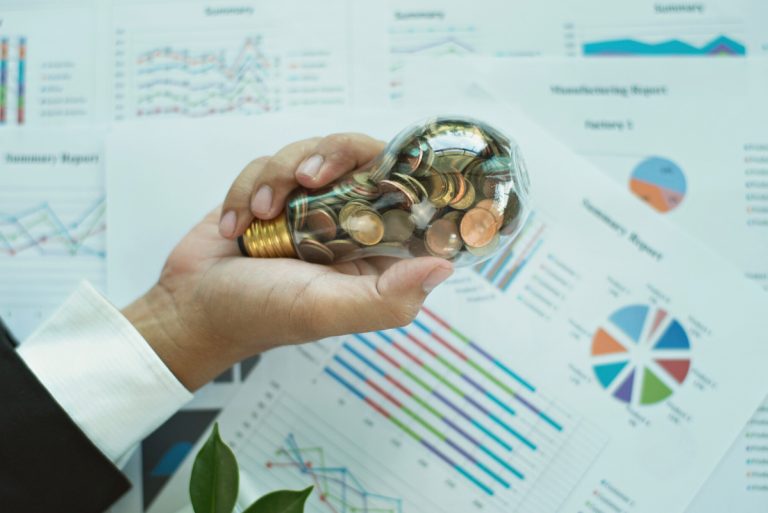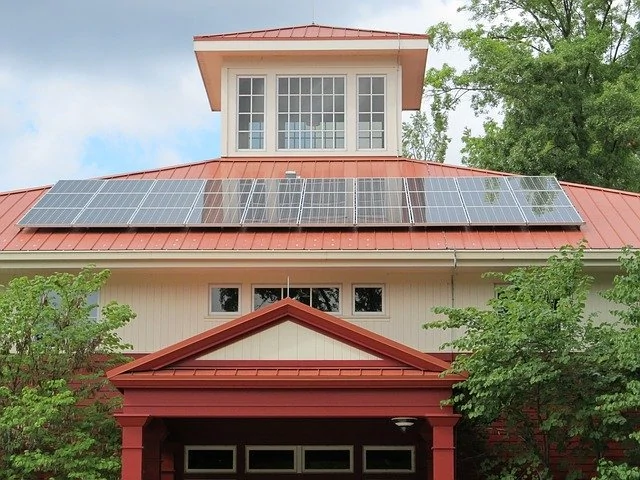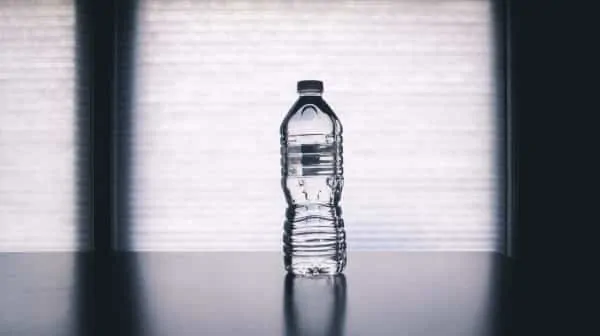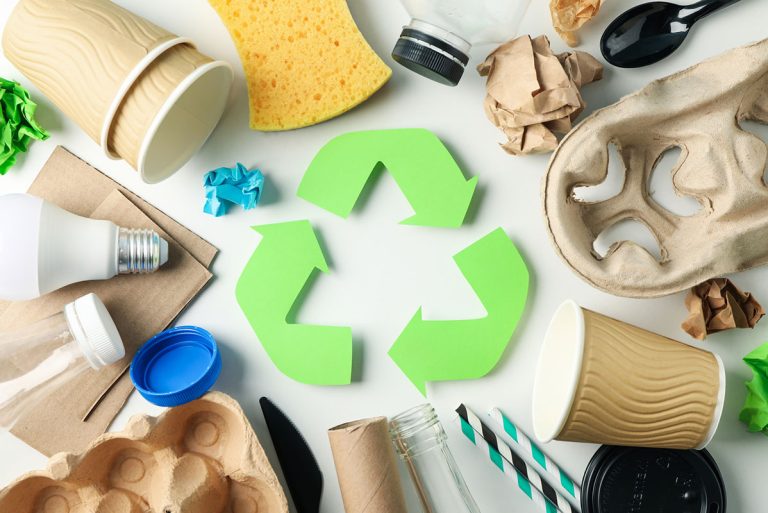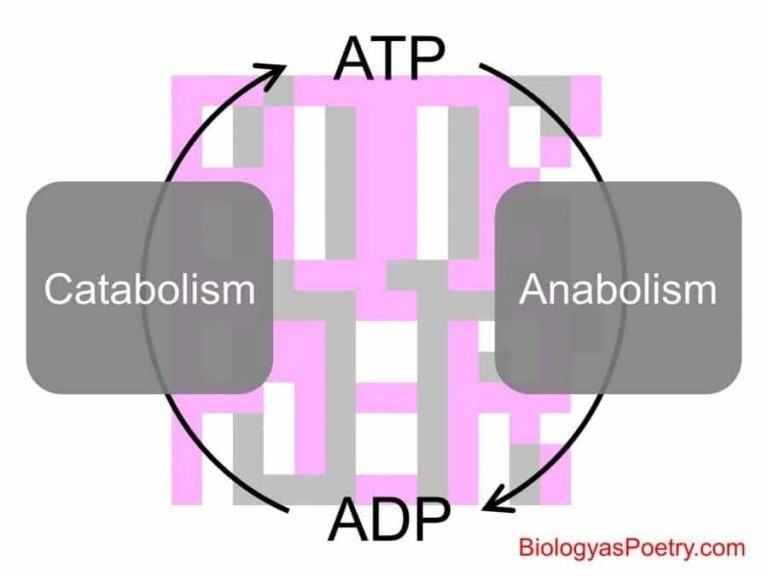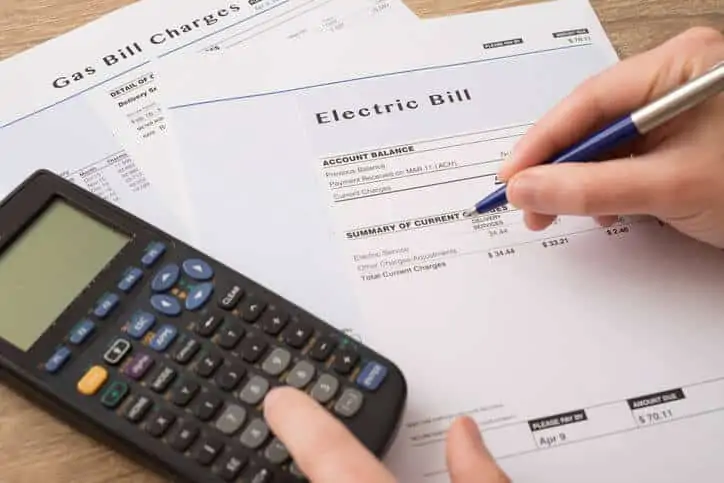These are some of the most proven, efficient energy conservation methods that you should consider to reduce your energy consumption.
19+ Eco-Friendly Energy Conservation Methods to Reduce Energy Consumption
Let’s get into our favorite energy conservation methods to save energy, environment and money along the way. Read our thorough guide about energy conservation if you want to know what it is and why it matters.
Install Roof Solar Panels
Generating your own electricity is a desirable goal. Roof solar panels allow you to do that while having a positive impact on the environment. Of course, solar panels don’t come cheap especially if you are looking to have enough capacity to power your entire home. Nevertheless, the startup costs have seen a substantial drop over the last decade.
In any case, you don’t have to go all out from the get-go. You could start small and allow solar power to first compliment your current energy needs then gradually add new capacity over time.
Depending on the size of your panels, you can power anything from a home computer to a heating and cooling system using the energy from the sun.
Improve Your Home’s Insulation
Heating and cooling costs will typically take up a significant proportion of your home’s electricity consumption. By improving the quality of your home’s insulation, you can substantially reduce the power required to maintain indoor temperatures at the desired levels. Use an energy-efficient space heater and you’ll be able to save on heating costs even more while protecting the platen at the same time.
If you install the recommended 270mm insulation, heated air will be held in for longer. That, in turn, means you don’t need to run your central heating for as long as you used to.
Good insulation is a worthwhile investment as it can last for decades before its effectiveness starts to experience meaningful deterioration. You can improve insulation in a sustainable manner by using eco-friendly insulation, such as sheep’s wool.
Install Door Sweeps
The bottom surface of a door cannot be in complete contact with the floor. There has to be a gap no matter how small that ensures it can be open and shut with ease. But this gap doesn’t do your home’s HVAC any favors since it is a notorious source of heating and cooling leakage.
If you have multiple zones in your home each requiring a different temperature at any one time, you can install door sweeps at door bottoms to prevent the zones from leaking into each other.
Even if your home doesn’t have zones, installing a door sweep on your outside-facing doors and the doors nearest to the outside can slash leakage substantially.
Sweeps cost less than $10 each and are easy to install. Grab one of these slick door sweeps to help retain heat and cold air while reducing your energy consumption.
Leverage Technology
Information technology has always played an important role in the management of electricity generation, distribution and consumption. New trends in the world of IT such as the Internet of Things, growing mobility and access to high-speed Internet connections, are all making IT more influential in everyday life than ever before.
Leverage the convenience of smart gadgets to ensure you are only using as much electricity as you need to. Smart meters are a great place to start but you want to go further by installing other smart tools.
For example, a smart thermostat can cut your energy costs by 15 percent as it streamlines the efficiency of your home’s heating and cooling. You can even consider using a Fronius smart meter to understand how your energy consumption flow.
Buy Energy Star Equipment
The Energy Star program is administered by the Department of Energy and the Environmental Protection Agency. The star has become a much sought after stamp of approval for manufacturers keen on building appliances that are energy efficient.
The difference between an Energy Star appliance and its conventional counterpart will vary depending on the type of appliance but the savings are always substantial over time.
For instance, an Energy Star fridge will use 15 percent less electricity than the typical refrigerator.
For most people, replacing all their home appliances with Energy Star ones at one go is too expensive. You can, however, develop a long-term plan where you replace the older equipment one by one with Energy Star ones.
And when any appliance breaks down, you can make it an opportunity to replace it with Energy Star rated equipment.
See Related: Best Energy Efficient TVs
Avoid Overlighting and Use Natural Lighting
Just because a certain space in your home or office has one or more light bulbs doesn’t mean that all the bulbs are necessary or that they should be on when darkness beckons. Get rid of superfluous lights in your spaces. Overlighting will not only bloat your power bills but the excessive lighting can cause glare, eye strain and headaches.
As you eliminate excessive artificial lighting, combine that with the harnessing of natural light.
If the location of your home means you have an ample supply of natural lighting, keep curtains and blinds open. Solar tube lighting is another affordable way to bring some natural light into your home.
The same principle applies to outdoor space. Using a solar lamp post will help light outdoor space without impacting your carbon footprint. And if you like to fly the flag outside of your home, consider using a solar flagpole light, which is a more environmentally friendly option compared to traditional illumination.
Install Energy-Saving Light Bulbs
Other than your refrigerator, there’s perhaps no other electrical item in your how that runs more hours per day than your lightbulbs. Ergo, if you can replace all your incandescent light bulbs with more energy-efficient lighting, it may cost you money upfront but saves you plenty of cash in the long run.
Alternative energy-efficient sources of home lighting include LED bulbs, compact fluorescent lamps and eco-incandescent light bulbs. Of these, LED bulbs are the most expensive but they last the longest and use the least energy.
These are some of the most proven and effective LED Bulbs to buy.
Clean Your Appliances
If your heater, refrigerator, computer and other appliances in your home become covered in dust, grime, grease and sediment, their mechanisms for heating and cooling will have to work much harder to keep them within the right temperature range.
Thoroughly clean your appliances regularly. Where possible and if permitted by the equipment manufacturers, dismantle the appliance into its component parts so you can access and clean the innermost sections.
This is not just an energy-saving measure—appliances that are regularly cleaned and serviced also last longer.
See Related: Electric Meter Reading Guide
Switch It Off
Leaving your appliances on standby is an unnecessary waste of electricity. Make a habit of switching off anything you are not using at that moment. It may seem a little laborious but when you add up the savings for an entire year, it’s more than worth it.
Alternatively, you could install smart power strips that sense energy demand from energy vampires (devices not in use but still connected to the power supply) and cut off the electricity supply automatically.
Did you know you can save money on energy without installing anything? You can use Arcadia Power to move to clean energy. You’ll save on your electric bill for completely free.
Install Occupancy-Sensing Lighting
Consider fitting occupancy or motion sensor lighting in your bathrooms, kitchen, study, garage and other spaces in your home that aren’t occupied continually.
That way, the lights will only come on when movement is detected in the room. They’d then go off after a period of inactivity.
Solar motion lights are also a great choice for an outdoor space, as they can be easily installed without running any cable or adding to your electricity bill.
Telecommute
Working from home is an opportunity to reduce your carbon footprint by minimizing or eliminating the energy you’d ordinarily use for the work commute as well as the cost of cooling, heating and lighting your workspace. It lowers your personal costs but also serves as your contribution to the global goal of cutting down greenhouse emissions generated by motorized transport.
If you are self-employed or run your own business, this is a decision you can easily make without the need to refer to someone else. If you are employed, however, your ability to work from home comes down to whether your employer permits it.
Nevertheless, even if your employer currently doesn’t have a telecommuting provision or policy, it’s something worth suggesting while highlighting the cost efficiencies your employer is likely to receive.
Cut Down Your Driving
The average passenger vehicle in the US travels more than 13,000 miles annually and produces an equivalent of over 5 tons of carbon dioxide each year. It would require more than 1.5 hectares of forest to get rid of such pollution from the atmosphere.
If telecommuting isn’t a practical option for you, you can still lower your energy costs and reduce your carbon footprint by cutting down the amount of driving you do.
You could, for instance, move more of your work journeys to public transportation where available. You can also pack several errands into a single driving trip so you don’t need to make multiple trips in a day.
You could join a neighborhood carpool. If you live near your workplace, cycling or walking to work should be among your commuting options—it’s great for your health and fitness.
The benefits of reducing your driving miles isn’t just about the fewer gallons you’ll use. Your car also experiences less wear and tear.
Minimize Food Waste
Before a meal ends up at your dinner table, it expends a significant amount of energy. If any of this food lands in the trash, that will be a waste of the energy that was used to grow, nurture and cook it.
Discarded and uneaten food comprises more than 30 percent of the entire available food supply in the US. The total amount of energy that was used to make this food is staggering. But that’s not the only eco-related reason why throwing away food is bad.
Food waste is the single biggest component of garbage dumps and is a major contributor to methane emissions.
Reduce food waste by finding opportunities to squeeze in leftovers into your next meal. If you have some food that remained after dinner, consider including it in your breakfast or your packed lunch.
Use the top-rated, awesome food storage options to preserve food and reduce overconsumption.
Line Dry Clothes
If you own a clothes dryer, chances are that it’s one of the biggest consumers of electricity in your home. You can lower your power costs substantially by using a clothes rack, installing a clothesline outside or hanging your wet laundry on hangers in your house.
Your clothes may take a day or two to dry but you’ll have saved yourself the expense that comes with regularly running the dryer.
Air Dry Dishes
Instead of running your dishwasher’s drying cycle, set it to clean only. Open the door once it’s done. The dishwasher’s wire racks can double up as drying racks.
Leaving the dishes to dry saves you the energy consumption you’d otherwise have expended with the drying cycle.
Insulate and Turn Down Your Water Heater
If your home is fitted with an old water heater, it’s probably not as well insulated as it should be. You can get an insulating sleeve from Amazon for just $30 or less. However, check the owner’s manual to confirm that it’s safe and permitted for you to do so.
Don’t work on the insulation of the heater only—do the same for the pipes that discharge and distribute water from the heater.
Save on the costs of heating your water by dialing down the optimal temperature. There’s no need to have water maintained at 140 degrees or more when 120 degrees can serve the purpose. In any case, different domestic water needs have different optimal temperatures.
140 degrees may be necessary for your dishwasher but is likely too much for the bathtub. In this case, you can raise the temperature when you need to use the dishwasher and lower it when done.
Go Paperless
Whether at home or in the office, reduce the amount of printing you do. It’s great for the environment because it saves on the paper you use and therefore makes a small but significant contribution toward preventing deforestation and paper processing.
Also, each time you send a job to your printer, some electric energy is expended.
So if you can read that 20-page document on your computer, tablet or smartphone screen, there’s no point in printing it. If you absolutely have to print a document, make the print-out double-sided while ensuring you print it on recycled paper.
See Related: How to Calculate Electricity Usage Costs
Perform an Energy Audit
Some utilities provide an energy audit consultation for free or at a relatively small fee. A number of not-for-profit organizations also offer energy use consultations.
During the consultation, the energy auditor examines your home for insulation gaps, studies your utility bills for seasonal fluctuations and provides an estimate of how long it would take to recoup the cost of any eco-friendly changes you make to your home.
If you don’t want to work with a third party and would prefer to perform the audit on your own, the Department of Energy has a free online energy calculator. Consider installing a building energy management system to control energy consumption in a building at large scale.
Claim Rebates
Local, state and federal governments around the world recognize the need for eco-friendly energy solutions. So if you invest in sustainable energy sources such as solar panels and wind turbines, you may be eligible for several federal and state tax rebates, deductions and credits.
The amount and nature of these benefits varies depending on where you live.
If you are in the US, check the Database of State Incentives for Renewables and Efficiency (DSIRE) to see the options available in your area. If you are a Minnesota resident, check out these energy rebates.
Why energy consumption is important
Global conversations around pollution, deforestation, toxic waste and global warming have drawn the attention of the average energy consumer. Concerned about making sure they are playing their role in creating a sustainable planet for future generations, many people are taking deliberate actions to cut down their energy costs without harming the environment.
It’s a classic win-win since you spend less but contribute to the global good.
Shopping for the most attractive electricity plan is one way to do so (e.g. see more info on the best electricity rates in Texas) but here’s a look at some other effective eco-friendly solutions for energy expenditure management.
Conclusion on Energy Conservation Methods
Energy conservation is important. The Earth needs it from all forms, including electricity, water and natural resources. Apply these tips to put a dent on your energy bills while feeling good about the change you are making in the world. Want to know more about sustainability? Read our in-depth guide to sustainability.
What one of these energy conservation methods is your favorite? Let us know in the comments below. We’d love to hear from you.







